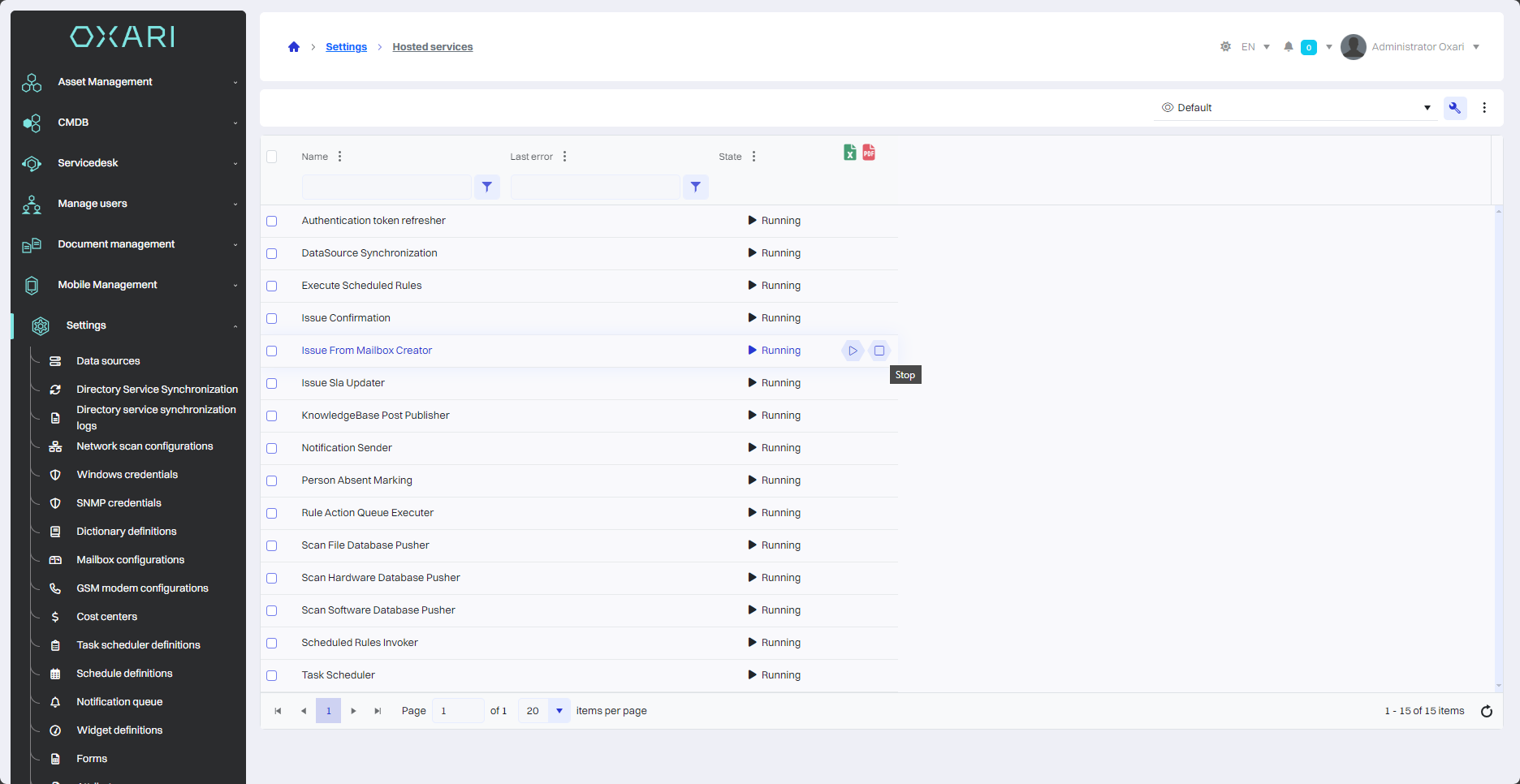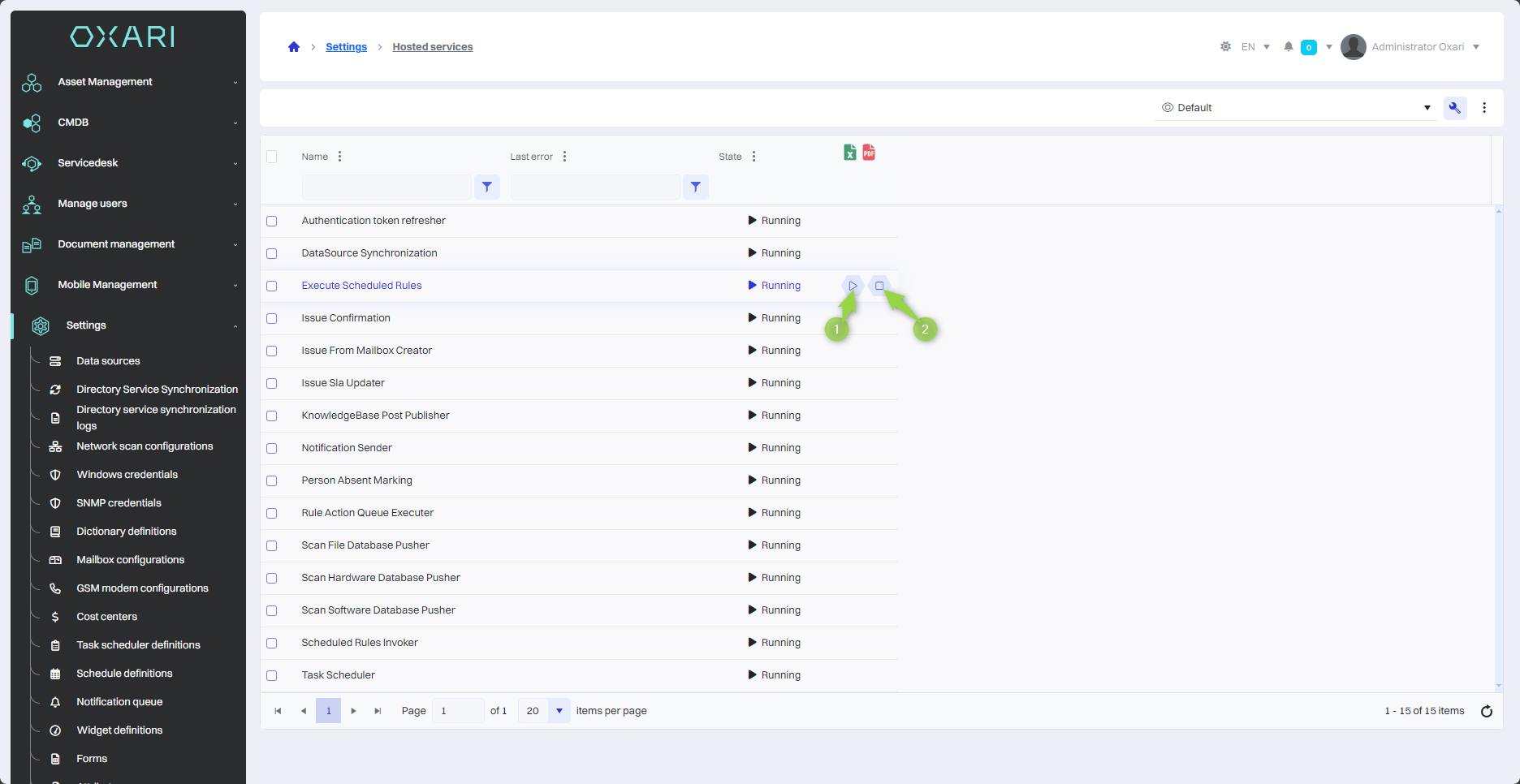System services
This interface is crucial for system administrators to monitor and manage the operational aspects of the Oxari system, ensuring the proper operation of all background processes and services necessary for the smooth functioning of applications. It allows diagnosing problems, managing the status of services and monitoring the overall health of the system.
Table of system services
The following is a description of each column in the system services table.
| 1 | Name - This is the name of a particular service. It allows administrators to select and view specific system services. |
| 2 | Latest error - Displays the latest error message from the system service. |
| 3 | Status - Provides the ability to see services based on their operational status (“Active”, “Inactive” or “Suspended”). |

Start/Stop system services
There are buttons to perform actions on services 1. Button to start. 2. button for stopping.

Description of System Services
Below is a description of each service in the system services table.
| 1 | Authentication Token Refresher - This service refreshes authentication tokens, ensuring that user sessions or API tokens remain active and secure. |
| 2 | DataSource Synchronization - A service that synchronizes data sources, between different systems or databases. |
| 3 | Execute Scheduled Rules - A service that executes scheduled rules and procedures. |
| 4 | Issue Confirmation - A service that confirms user requests or actions. |
| 5 | Issue From Mailbox Creator - A service that creates notifications based on incoming e-mails. |
| 6 | Issue SLA Updater - Service that updates SLA (Service Level Agreements) levels for requests. |
| 7 | KnowledgeBase Post Publisher - A service that publishes articles or updates in the system's knowledge base. |
| 8 | Notification Sender - The service responsible for sending e-mail notifications or other messages. |
| 9 | Person Absent Marking - This service makes it possible to register staff absences in the system. |
| 10 | Rule Action Queue Executer - This service is responsible for processing and executing actions in the task queue based on defined rules. |
| 11 | Scan File Database Pusher - A service that sends scanned files to a database. |
| 12 | Scan Hardware Database Pusher - This service scans and updates information about physical computer equipment in the organization. |
| 13 | Scan Software Database Pusher - Analogous to the hardware service, this service scans and updates information about software installed on devices. |
| 14 | Scheduled Rules Invoker - A service that triggers defined rules at specific times. |
| 15 | Task Scheduler - A service that schedules and executes scheduled tasks at specified time intervals. |

